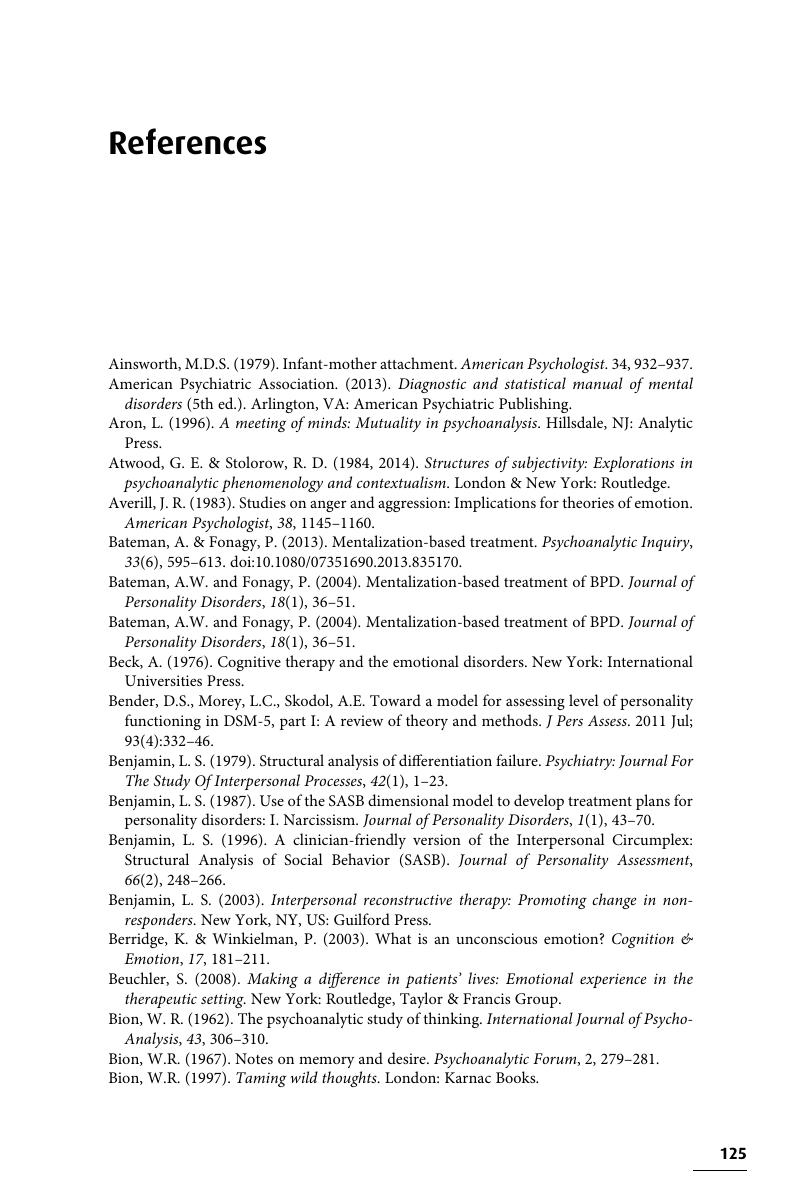Book contents
- Adult Personality Growth in Psychotherapy
- Adult Personality Growth in Psychotherapy
- Copyright page
- Contents
- Preface
- Book part
- 1 Achieving personality growth in psychotherapy
- Section I Self-organization
- Section II Relationships
- Section III Control and emotional regulation
- Bibliography
- Glossary
- Index
- References
Bibliography
Published online by Cambridge University Press: 05 June 2016
- Adult Personality Growth in Psychotherapy
- Adult Personality Growth in Psychotherapy
- Copyright page
- Contents
- Preface
- Book part
- 1 Achieving personality growth in psychotherapy
- Section I Self-organization
- Section II Relationships
- Section III Control and emotional regulation
- Bibliography
- Glossary
- Index
- References
Summary

- Type
- Chapter
- Information
- Adult Personality Growth in Psychotherapy , pp. 125 - 133Publisher: Cambridge University PressPrint publication year: 2016



